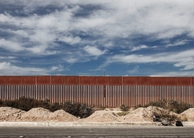This article explores the genesis and development of The 5 Drivers of Crime (described as "the underlying causes of offending and victimisation") and examines its impact in the context of policy effectiveness and outcomes. The ‘drivers of crime’ was introduced into New Zealand policing to help meet crime rate reduction targets and transform the business of policing from traditional responsive policing to a preventive model. Recent crime prevention policies elsewhere have identified similar factors, such as England’s “six key drivers of crime,” and South Africa’s “six priorities” which seek to address “the root causes” and “drivers” of crime. These initiatives go to the heart of a fundamental question in criminology: "what causes crime?” The United Nations has also invited state actors to advance knowledge-based strategies to prevent crime and reduce victimisation.
Discourse on New Zealand’s Addressing the Drivers of Crime program may, therefore, be of wider interest to policymakers and practitioners. The article contends that The 5 Drivers of Crime mischaracterises correlation for causation, and seemingly overlooks an important ‘driver’ often associated with serious offending. Its constituent elements nonetheless retain legitimacy as risk factors correlated with crime and initial priority areas for policy development. This article argues that the distinction between causation and correlation matters, because focusing on elements that have little or no causal effect on crime and excluding others arguably risks sub-optimal outcomes. The article concludes with policy implications and suggestions, and a response to the question posed by its title. A companion article (Revisiting crime rates as a measure of crime prevention effectiveness) constructively critiques crime rates as a crime prevention effectiveness measure.
"If you wish to converse with me", said Voltaire, "define your terms." How many a debate would have been deflated into a paragraph if the disputants had dared to define their terms! This is the alpha and omega of logic, the heart and soul of it, that every important term in serious discourse shall be subjected to strictest scrutiny and definition. It is difficult, and ruthlessly tests the mind: but once done it is half of any task (Durant, 1949, p. 48).
What is a 'driver' in the context of 'drivers of crime'? Dictionary definitions are unclear whether it indicates causation or rests at correlation. The 5 Drivers of Crime introduced into operational policing in New Zealand claims the former:
The term 'drivers of crime' refers to the underlying causes of offending and victimisation (MOJ, 2009a, p. 2).
Understand and respond to the drivers of crime. Address the underlying causes of offending and victimisation: families, youth, alcohol, organised crime and drugs, and road safety (NZ Police, 2014a, p. 22; 2014c, p. 34; 2015, p. 16).
Seemingly consistent with Voltaire's refrain, the term 'drivers of crime' in New Zealand's criminal justice context is concisely defined, yet there is overlap and divergence in the use of terms like 'drivers', 'causes', 'issues' and 'risk factors'. Apparent definitional clarity becomes mirage-like: clearly defined, yet somehow uncertain. Voltaire’s maxim thus implies a necessary adjunct. Effective definitions also require consistency and the evidence-based rigour of accuracy. Defining a term with the clarity of well-defined assertion carries the benefit of simplicity, yet doing so consistently and accurately helps convey meaning both simple and profound.
This article explores the genesis and development of The 5 Drivers of Crime introduced into New Zealand policing. It contends that an expressive term inaccurately defined, or of inconsistent and vague definition, expressly or implicitly mischaracterises correlation for causation. The article ends with a response to the question posed by its title.
“The greatest evil is not now done in those sordid "dens of crime" that Dickens loved to paint... It is conceived and ordered ... by quiet men with white collars" (Lewis, 1942, p. x).
Crime takes many forms. As C. S. Lewis noted it may be the brutal variety depicted by Dickens, or orchestrated for profit by white-collar criminals. Understanding the underlying causal drivers of each would help realise a long-held promise for successful crime prevention (Cantor, 1933, pp. 1032-1033).
In the modern context, the United Nations has invited states to progress and share knowledge-based strategies to prevent crime and reduce victimisation (UN ECOSOC, 2002), and ‘drivers of crime’ go to the heart of a fundamental question in criminology: "what causes crime?” (Hagan, 2007, p. 6). Before the UN guidelines were formulated (1995), Graham and Bennett identified 55 mostly local crime prevention initiatives in 12 countries. By 2013 more than 50 countries had reportedly established national crime prevention strategies, with some already in the process of renewal or modification (ICPC, 2014, pp. 25-26). A recent example is England’s “six key ‘drivers’ of crime”(Home Office, 2015). South Africa’s National Development Plan 2030 is another. It sets “five priorities,” and seeks to identify and resolve “the root causes” and “drivers” of crime (Civilian Secretariat for Police, 2015, pp. 13, 21, 23, 25). In New Zealand, core factors described in similar terms, as "the underlying causes of offending and victimisation", have been operational much longer. Since 2009 it has been expressed in a series of high-level organisational strategies and implemented operationally, so New Zealand’s experience may be of wider interest as other jurisdictions develop and refine strategies to reduce crime and victimisation.
In 2009, New Zealand's government embarked on an ambitious policy program to “improve public safety, improve value-for-money; and improve outcomes for New Zealand society" (Cabinet, 2009). Addressing the Drivers of Crime was the bold title ascribed to a multi-agency program to supplement "tough on crime" rhetoric with "smart on crime" strategies (MOJ, 2009a, p. 2). Cabinet papers described "a new approach to reducing offending and victimisation by … address[ing] the underlying drivers of crime", and to "improve public safety ... by working on the causes of crime" (Cabinet, 2009, p. 1; 2010, p. 1). The logic is clear. "Long-term and sustainable cost reductions in the criminal justice system can be achieved only if we stop people from offending in the first place" (Cabinet, 2009, p. 3). Rather than a reactive criminal justice response to crime, a proactive whole-of-government approach is intended to focus justice and social sector agencies on early intervention.
Rather than a reactive criminal justice response to crime, a proactive whole-of-government approach is intended to focus justice and social sector agencies on early intervention.
By 2014 NZ Police plausibly claimed success on many elements of its organisational change process transforming the business of policing from a traditional response-driven to a preventive model, as outlined in the self-published retrospective Policing Excellence (NZ Police, 2014b). ‘Initial priority areas’ to help guide crime prevention initiatives appear also to have transformed, seemingly regarded ‘drivers’ of crime in a causal sense, as charted in the next two sections.
Cabinet was advised in 2009 that "the underlying drivers of crime are complex" (Cabinet, 2009, p. 1), and four “initial priority areas” were identified for early attention by policymakers and government agencies:
- Families. Antenatal, maternity and early parenting support.
- Youth. Treatment of behavioural problems in children and young people.
- Alcohol & drugs. Reducing the harm caused by alcohol [and improving the availability and accessibility of alcohol and drug treatment services].
- Alternative approaches to managing low-level offenders, and offering pathways out of offending (Cabinet, 2009, pp. 2, 7, 12).
The Cabinet paper drew extensively from an earlier Drivers of Crime Ministerial Meeting, in essence, a one-day conference of officials, experts and interested parties; with formal papers, submissions and an 82-page report. It referred to policy initiatives targeting "risk factors" that are “related” or "contribute” to or have an “impact” on offending (Cabinet, 2009, pp. 1, 2, 4), seemingly representing factors associated with crime, not necessarily the underlying causes of offending. That interpretation is consistent with literature addressing the “fundamental question” of criminology, “what causes crime?” (Hagan, 2007, p. 6), which explores factors associated with criminal activity but typically ventures to isolate "causes, or drivers" only about particular circumstances or types of crime (eg Søreide, 2014, p. 6, emphasis in original). For claims to a more expansive definition encompassing the causes of crime, Professor Hagan added a cautionary note:
High hopes are raised for the discovery of a 'key' to explaining all crime and criminality, though no such breakthroughs have occurred in the parent social sciences - sociology, psychology, political science and economics - themselves. Those who are uncomfortable with such a theoretical morass might best be advised to study chemistry or biology or auto mechanics - fields in which the theoretical and empirical turf is tidier; the subject matter of the social sciences is infinitely more complex and not likely to yield to a general and universally accepted theory in the near future (2011, p. 92).
A study inspired by Becker's economic model of crime to test explanations for falling crime rates noted that economists, like their criminological colleagues, also “know little about the empirically relevant determinants of crime" (Dills, Miron, & Summers, 2008, p. 3). References in the Cabinet paper to 'risk factors' associated with crime likewise accord with earlier policy briefs. Consistent with the literature noted above, a range of issues, including social factors involving families, communities, education, poverty, alcohol and drugs were regarded relevant but not necessarily "causally related to offending, [they may be] simply correlated with such behaviour" (MOJ, 2009c).
The 'initial priority areas' themselves also mirror crime prevention policy selections elsewhere. United Nations guidelines emphasise “communities, families, children and youth at risk" (UN ECOSOC, 2002, no. 8). Similar areas "requiring a concerted and coordinated response" appear under the aegis of an Australasian grouping of senior police officers (National Crime Prevention Framework, Australian Institute of Criminology, 2012, p. 11). In neither case, however, are such factors claimed criminally causative.
Although the 2009 Cabinet paper often separated 'priority areas' from causal factors associated with the title of the overarching Addressing the Drivers of Crime program, the seeds of confusion which later took root can be traced to this paper too, which also recorded a “shared enthusiasm” to "address the root causes of offending and victimisation" (Cabinet, 2009, p. 3, emphasis added). Repeatedly using the term ‘drivers of crime’ without clear definition also allowed it potentially to attract a causal interpretation. Similarly, the earlier Drivers of Crime Ministerial Meeting frequently distinguished between "the underlying drivers of crime" and "factors (or a combination of factors) [which] impact on crime", but also addressed many such issues loosely using either descriptor or both (eg, MOJ, 2009b, pp. 18, 26, 56). Opening remarks by the Minister of Justice had set a similarly disjointed scene, variously describing ‘drivers of crime’ as identifying “the causes of crime” or merely part of “the social and individual currents” placing people at a point they are about to offend (Power, 2009, emphasis added).
As noted above, the issues identified in the 2009 Cabinet paper and Drivers of Crime Ministerial Meeting are themselves unremarkable. They are typical of risk factors found in studies of crime causation by lay people (Banks, Maloney, & Willcock, 1975; Reuterman, 1978) and criminal justice groups (Cullen, Clark, Cullen, & Mathers, 1985; Reuterman & Cartwright, 1976). There is “widespread agreement” with “considerable overlap" about the various factors associated with offending (Campbell & Muncer, 1990, p. 411), and similar factors appear in various international crime prevention guidelines (Australian Institute of Criminology, 2012; UN ECOSOC, 2002). The issue here is not, therefore, with any of those factors, nor the policy decision to focus initial efforts on any subset of them. This article instead traces an apparent misperception between correlation and causation regarding well-recognised factors associated with crime.
Any remaining delineation between a list of contributory factors relevant to crime and the underlying causes of crime appears ultimately to have largely evaporated as the assumption of causation expressly or implicitly replaced correlation (as outlined in the next section), notwithstanding signposts that might have indicated another path. For example:
- A series of basic policy briefs advised that "risk factors ... may be causally related to offending, or simply correlated with such behaviour" (MOJ, 2009c, p. 1).
- Guidance in criminology texts that "simply listing correlations of factors associated with crime does not represent a theory [of causality]", and that "correlation does not equal causation" (Hagan, 2011, p. 194).
- Widely-accessible common sense analogies:
To expect criminologists to address the query 'What causes crime?' is comparable to asking medical pathologists to answer the query 'What causes sickness?' Asking 'What type of sickness?' or 'What type of crime?' is the next logical step in approaching these questions. While the only thing most sicknesses have in common is that they have produced an unhealthy biological state, the only thing most crimes have in common is that they are, in a given place, at a given time, a violation of criminal law. Thus, cancer, polio and the common cold probably have about as much in common as shoplifting, embezzlement and murder (Hagan, 2011, p. 195).
- New Zealand government reports prepared for an earlier national crime prevention initiative involving 22 government agencies extensively canvassed the scientific literature and expressly rejected a causal explanation of crime (Crime Prevention Action Group, 1992, pp. 4, 29; 1993, p. xi; O'Neill, 1993). In 1993, a specialist Crime Prevention Unit in the Department of Prime Minister and Cabinet (transferred to the Ministry of Justice in 2000) listed seven 'key areas’ for ‘priority concern’ strikingly similar to those later identified as 'initial priority areas' in 2009/2010 (Crime Prevention Unit, 1993). That research noted that such factors had been “consistently identified” elsewhere, “regardless of where the phenomenon of crime has been studied” (Crime Prevention Action Group, 1992, p. 29). There was, however, a fundamental difference. Similar areas were identified as important risk factors correlated with crime as to justify priority attention in 2009/2010 as in 1992/1993, but in the earlier exercise, following extensive research and in-depth engagement with the academic literature, it was accepted that none could properly be characterised as representing the underlying causes of offending.
The next section traces the continuing journey by which correlation appears to have morphed into expressions of causation, notwithstanding these signposts.Continued on Next Page »
ACC. (2015). The costs of serious and organised crime in Australia 2013-2014. Retrieved from Canberra, ACT, Australia: http://www.crimecommission.gov.au/publications/intelligence-products/costs-serious-and-organised-crime-australia-2013-14
Anon (2014, 11 March 2014). [Informal unstructured interview: Drivers of crime, gatekeeper involvement, police culture].
Anon (2015a, 26 August 2015). [Informal unstructured interview: Drivers of crime, ML & professionals, ML research].
Anon (2015b, 6 November 2015). [Informal unstructured telephone discussion: Drivers of crime not causative 'worst kept secret'].
Australian Institute of Criminology. (2012). National crime prevention framework. Retrieved from http://aic.gov.au/crime_community/crimeprevention/ncpf.html
Banks, C., Maloney, E., & Willcock, H. (1975). Public attitudes to crime and the penal system. The British Journal of Criminology, 15(3), 228-240. Retrieved from http://www.jstor.org/stable/23636156
Beard, M. (2007). Roman Triumph. Cambridge, MA, USA: Harvard University Press.
Brook, E. (2014). Spotlight on,... the Asset Recovery Unit. Police News, 47(2). Retrieved from http://www.policeassn.org.nz/newsroom/publications/featured-articles/spotlight-on%E2%80%A6-asset-recovery-unit
Brown, S. E., Esbensen, F.-A., & Geis, G. (2010). Criminology: Explaining crime and its context Retrieved from http://www.eblib.com Retrieved from http://www.eblib.com
Bush, M. (2013). Brakes go on drivers of crime. Ten One(365). Retrieved from http://tenone.police.govt.nz/tenone/January13National3.htm
Byrne, M. (2015). Queensland Organised Crime Commission of Inquiry. Retrieved from https://www.organisedcrimeinquiry.qld.gov.au/__data/assets/pdf_file/0017/935/QOCCI15287-ORGANISED-CRIME-INQUIRY_Final_Report.pdf
Cabinet. (2009). Cabinet Paper. Addressing the drivers of crime. Wellington, NZ: New Zealand Government Retrieved from http://www.justice.govt.nz/justice-sector/drivers-of-crime/publications-and-background-information/documents/Addressing%20the%20Drivers%20of%20Crime%20Cabinet%20paper.pdf.
Cabinet. (2010). Cabinet Paper. Addressing the drivers of crime: progress and opportunities. Wellington, NZ: New Zealand Government Retrieved from http://www.justice.govt.nz/justice-sector/drivers-of-crime/publications-and-background-information/documents/Dec%20Cab%20paper%20for%20website.pdf.
Cabinet. (2012a). Cabinet Paper. Better public services results: targets and public communication. Wellington, NZ: New Zealand Government Retrieved from http://www.ssc.govt.nz/sites/all/files/bps-cab-paper-results-targets-25june2012_0.pdf.
Cabinet. (2012b). Cabinet Paper. Drivers of Crime. Investment package for alcohol and other drug assessments and interventions - implementation plan. Wellington, NZ: New Zealand Government Retrieved from http://www.justice.govt.nz/publications/global-publications/d/drivers-of-crime-investment-package-for-alcohol-and-other-drug-assessments-and-interventions-2013-implementation-plan-cabinet-paper.
Cabinet. (2014). Cabinet Paper. Whole-of-government action plan to reduce the harms caused by New Zealand adult gangs and transnational crime groups. Wellington, NZ: New Zealand Government Retrieved from http://www.police.govt.nz/sites/default/files/publications/cabinet-paper-whole-of-govt-action-plan-to-reduce-harms-caused-by-adult-gangs-and-transnational-crime-groups.pdf.
Campbell, A., & Muncer, S. (1990). Causes of crime: Uncovering a lay model. Criminal Justice and Behavior, 17(4), 410-419. doi:10.1177/0093854890017004002
Cantor, N. (1933). The causes of crime. Journal of Criminal Law and Criminology (1931-1951), 23(6), 1029-1034. doi:10.2307/1136079
Civilian Secretariat for Police. (2015). Draft white paper on safety and security: notice for public comments. Government Gazette: Republic of South Africa Retrieved from http://www.gov.za/sites/www.gov.za/files/38526_gen178.pdf.
Clarke, R. V. (2004). Technology, criminology and crime science. European Journal on Criminal Policy and Research, 10(1), 55-63. doi:10.1023/B:CRIM.0000037557.42894.f7
Coleman, J. W. (1992). Crime and money motivation and opportunity in a monetarized economy. The American Behavioral Scientist, 35(6), 827-836. Retrieved from http://search.proquest.com.libraryproxy.griffith.edu.au/docview/194894102?accountid=14543
Crime Prevention Action Group. (1992). Strategy paper on crime prevention: Report on the the preliminary stage of analysis. Retrieved from Wellington, NZ:
Crime Prevention Action Group. (1993). Strategic management of government crime prevention activities: CPAG Phase II interim report. Retrieved from Wellington, NZ:
Crime Prevention Unit. (1993). The New Zealand Crime Prevention Strategy. Retrieved from Wellington, NZ:
Crimes Act, 1961 No 43 Stat. (1961 1 November 1961).
Cullen, F. T., Clark, G. A., Cullen, J. B., & Mathers, R. A. (1985). Attribution, salience, and attitudes toward criminal sanctioning. Criminal Justice and Behavior, 12(3), 305-331. doi:10.1177/0093854885012003003
Davidson, I., & McGill, G. (2013). Follow the money: tackling money laundering to reduce organised crime. Paper presented at the Policing organised crime: changing landscape, changing practice conference. http://www.police-foundation.org.uk/uploads/holding/annual_conference/follow_the_money.pdf
Dills, A. K., Miron, J. A., & Summers, G. (2008). What do economists know about crime? Retrieved from Cambridge, MA, USA: http://www.nber.org/papers/w13759
Durant, W. (1949). The story of philosophy: the lives and opinions of the greater philosophers (2 ed.). New York, USA: Simon and Schuster.
Evans, M. (2015a, July 2015). Guide to good practice. TenOne.
Evans, M. (2015b). Top POP Cops head to Christchurch for final. Retrieved from http://www.police.govt.nz/news/release/top-pop-cops-head-christchurch-final
FATF. (2012). FAQ: Money laundering. Retrieved from http://www.fatf-gafi.org/pages/faq/moneylaundering/
Fréchette, L. (2000). No country alone can cope with growth of transnational crime, says Deputy Secretary-General to Vienna Crime Congress [Press release]. Retrieved from http://www.un.org/press/en/2000/20000406.dsgsm92.doc.html
Ganley, E. (2015, 28 September 2015). Human trafficking in refugees: Smugglers rule camps in northern France. CDC News. Retrieved from http://www.cbc.ca/m/touch/world/story/1.3246532
Gilmour, N. (2014). Understanding money laundering - a crime script approach. The European Review of Organised Crime, 1(2), 35-56. Retrieved from http://sgocnet.org/site/wp-content/uploads/2014/06/Gilmour_3_35-56.pdf
Gilmour, N., & Ridley, N. (2015). Everyday vulnerabilities – money laundering through cash intensive businesses. Journal of Money Laundering Control, 18(3), 293-303. doi:10.1108/JMLC-06-2014-0019
Graham, J., & Bennett, T. (1995). Crime prevention srategies in Europe and North America Retrieved from
Hagan, F. E. (2007). Introduction Introduction to criminology: Theories, methods, and criminal behavior (6 ed.). UK: Sage Publications, inc.
Hagan, F. E. (2011). Introduction to criminology: Theories, methods and criminal behaviour (7 ed.): Sage Publications, Inc.
Home Office. (2015). Opportunity/security as a driver of crime: a discussion paper. Retrieved from https://www.gov.uk/government/uploads/system/uploads/attachment_data/file/398865/Opportunity_security_final_v2.pdf
Hutt News. (2015, 15 September 2015). Meth addict terrorises. Hutt News. Retrieved from http://huttnews.realviewdigital.com/?iid=127970&startpage=page0000034#folio=34
ICPC. (2014). Crime Prevention and community safety: Trends and perspectives. Retrieved from Montréal, Québec, Canada: http://www.crime-prevention-intl.org/en/publications/report/report/article/4th-international-report-on-crime-prevention-and-community-safety.html
Laycock, G. (2005). Defining crime science. In M. J. Smith & N. Tilley (Eds.), Crime science: New approaches to preventing and detecting crime (pp. 3-24). Cullompton, Devon, UK: Willan Publishing.
Lewis, C. S. (1942). The screwtape letters. UK: Geoffrey Bles.
McFadden, M., O'Flaherty, M., Boreham, P., & Haynes, M. (2014). Targeting the profits of illicit drug trafficking through proceeds of crime action. Retrieved from Canberra, Australia: http://ndlerf.gov.au/publications/monographs/monograph-52
MOJ. (2009a). Addressing the drivers of crime: background information. Retrieved from Wellington, NZ: http://www.justice.govt.nz/justice-sector/drivers-of-crime/publications-and-background-information/documents/Addressing%20the%20Drivers%20of%20Crime%20background%20paper%20-2.pdf
MOJ. (2009b). Drivers of Crime Ministerial Meeting: Full proceedings. Retrieved from Wellington, NZ: http://www.justice.govt.nz/justice-sector/drivers-of-crime/publications-and-background-information/documents/drivers-of-crime-ministerial-meeting-proceedings
MOJ. (2009c). Risk factors and causal mechanisms for offending. Retrieved from Wellington, NZ: http://www.justice.govt.nz/justice-sector/drivers-of-crime/publications-and-background-information/documents/spb-risk-factors-and-causal-mechanisms
MOJ. (2011). Strengthening New Zealand's resistance to organised crime: An all-of-government response. Retrieved from Wellington, NZ: http://www.justice.govt.nz/publications/global-publications/s/strengthening-new-zealands-resistance-to-organised-crime
Murray, K. (2011). The uses of irresistible inference: Protecting the system from criminal penetration through more effective prosecution of money laundering offences. Journal of Money Laundering Control, 14(1), 7-15. doi:10.1108/13685201111098842
Newburn, T. (2007). Criminology. Cullompton, Devon, UK: Willan Publishing.
Nippert, M. (2013, 12 February 2012). Economic crime costs NZ billions each year. Stuff. Retrieved from http://www.stuff.co.nz/business/industries/8291073/Economic-crime-costs-NZ-billions-each-year
Federal Government's response to money laundering: Hearings before the Committee on Banking, Finance & Urban Affairs (Statement of Ronald K Noble, Assistant Secretary for Enforcement, US Department of the Treasury), 103d Congress, 1st Sess 200-01 Sess (1993).
NZ Police. (2009a). Illicit drug strategy to 2010. Retrieved from Wellington, NZ: https://www.police.govt.nz/resources/2009/NZ_Police_Illicit_Drug_Strategy_2009.pdf
NZ Police. (2009b). Statement of Intent 2009/10 - 2011/12. Retrieved from Wellington, NZ: http://www.police.govt.nz/sites/default/files/publications/statement-of-intent-2009-10-2011-12.pdf
NZ Police. (2010). Organised crime in New Zealand. Retrieved from Wellington, NZ: http://www.ofcanz.govt.nz/sites/default/files/Organised-Crime-in-NZ-2010-Public-Version.pdf
NZ Police. (2011). Annual Report 2010/11. Retrieved from Wellington, NZ: http://www.police.govt.nz/sites/default/files/publications/annual-report-2011.pdf
NZ Police. (2012a). Prevention first: National operating strategy 2011-2015. Retrieved from Wellington, NZ: http://www.police.govt.nz/sites/default/files/publications/prevention-first-strategy-2011-2015.pdf
NZ Police. (2012b). Statement of Intent 2012-2014. Retrieved from Wellington, NZ: http://www.police.govt.nz/sites/default/files/publications/statement-of-intent-2012-13-2014-15.pdf
NZ Police. (2013a). Policing excellence programme charter. Retrieved from Wellington, NZ:
NZ Police. (2013b). Statement of Intent 2013/2014 - 2015/2016. Retrieved from Wellington, NZ: http://www.police.govt.nz/sites/default/files/publications/statement-of-intent-2013-14-2015-16.pdf
NZ Police. (2014a). Annual Report 2013/2014. Retrieved from Wellington, NZ: http://www.police.govt.nz/sites/default/files/publications/annual-report-2014.pdf
NZ Police. (2014b). Policing Excellence: the transformation of New Zealand Police 2009-2014. Retrieved from Wellington, NZ: http://www.police.govt.nz/sites/default/files/publications/policing-excellence-closure.pdf
NZ Police. (2014c). Statement of Intent 2014/15 - 2017/18. Retrieved from New Zealand Police: http://www.police.govt.nz/sites/default/files/publications/2014-statement-of-intent.pdf
NZ Police. (2015). Four year plan 2015/16 - 2018/19. Retrieved from Wellington, NZ: http://www.police.govt.nz/sites/default/files/publications/strategic-plan-2015-08-06-four-year-plan.pdf
O'Neill, R. (1993). Crime prevention strategies: the New Zealand model. Social Policy Journal of New Zealand, 1(1). Retrieved from http://www.msd.govt.nz/about-msd-and-our-work/publications-resources/journals-and-magazines/social-policy-journal/spj01/01-crime-prevention.html
Paoli, L., & Greenfield, V. A. (2015). Starting from the end: A plea for focusing on the consequences of crime. European Journal of Crime, Criminal Law and Criminal Justice, 23(2), 87-100. doi:doi:10.1163/15718174-23022062
Pawson, R. (2002). Evidence-based policy: The promise of `realist synthesis'. Evaluation, 8(3), 340-358. doi:10.1177/135638902401462448
Power, S. (2009). Drivers of crime ministerial meeting: opening remarks. Paper presented at the Drivers of crime ministerial meeting, Wellington, NZ. http://www.justice.govt.nz/justice-sector/drivers-of-crime/drivers-of-crime-ministerial-meeting/speeches/opening-remarks
Power, S. (2011). Speech to Institute of Policy Studies 'Costs of crime' forum. Paper presented at the Costs of crime, Wellington, NZ. http://www.rethinking.org.nz/assets/Cost%20of%20Crime/Hon%20Simon%20Power%20Speech%20Costs%20of%20Crime%202011.pdf
R v Zhang & Ors, No. CRI-2013-092-11602, [2015] NZHC 2325 (High Court of New Zealand, Auckland 2015).
Reuterman, N. A. (1978). The public's views of delinquency causation: A consideration in comprehensive juvenile justice planning. Juvenile and Family Court Journal, 29(3), 39-45. doi:10.1111/j.1755-6988.1978.tb01155.x
Reuterman, N. A., & Cartwright, D. S. (1976). Practitioners' views of delinquency causation: A consideration in comprehensive juvenile justice planning. Criminal Justice and Behavior, 3(1), 67-84. doi:10.1177/009385487600300106
Roper, T., & Thompson, A. (2006). Estimating the costs of crime in New Zealand in 2003/04. Retrieved from http://www.treasury.govt.nz/publications/research-policy/wp/2006/06-04/twp06-04.pdf
Rose, J. (2014). Economic crime costs up to $9.4bn. Radio NZ. Retrieved from http://www.radionz.co.nz/news/national/257185/economic-crime-costs-up-to-$9-point-4bn
Serious Fraud Office. (2012). Cost of economic crime report: An estimate by the serious Fraud Office of the total scale of fraud in New Zealand [Draft, redacted version]. Retrieved from Auckland, NZ: https://s3.amazonaws.com/s3.documentcloud.org/documents/1336568/img-x14110421-0001.pdf
Sherman, L. W. (1998). Evidence-based policing. Ideas in American Policing(July 1998), 1-15. Retrieved from http://www.policefoundation.org/wp-content/uploads/2015/06/Sherman-1998-Evidence-Based-Policing.pdf
Sherman, L. W., Farrington, D. P., Welsh, B. C., & MacKenzie, D. L. (2002). Evidence-based crime prevention. London, UK; New York, USA: Routledge.
Søreide, T. (2014). Drivers of corruption: A brief review International Bank for Reconstruction and Development / The World Bank.
SSC, Treasury, & DPMC. (2014). Performance improvement framework: Follow-up review of New Zealand Police. Wellington, NZ: New Zealand Government Retrieved from http://www.police.govt.nz/sites/default/files/publications/performance-improvement-framework-follow-up.pdf.
St Thomas of Canterbury College. (2015). Edmund Rice Youth Custody Index 2015. Retrieved from Christchurch, NZ: http://www.erjustice.org.nz/wp-content/uploads/2010/10/YCI-2015.pdf
Stankiewicz, N. (2015). Using anti-money laundering measures in the financial world to combat organized crime. Student Pulse, 7(10). http://www.inquiriesjournal.com/a?id=1268 Retrieved from http://www.inquiriesjournal.com/a?id=1268
Stuff. (2015, 15 September 2015). Louis Vuitton handbag seized in $800,000 meth bust. Stuff. Retrieved from http://www.stuff.co.nz/auckland/local-news/72088681/louis-vuitton-handbag-seized-in-800000-meth-bust
United Nations convention against transnational organized crime, (2000).
UN ECOSOC. (2002). Guidelines for the prevention of crime (Vol. ECOSOC Resolution 2002/13 (Action to promote effective crime prevention), Annex). New York: United Nations Economic and Social Council (ECOSOC).
UNODC. (2011). Estimating illicit financial flows resulting from drug trafficking and other transnational organized crimes. Retrieved from https://www.unodc.org/documents/data-and-analysis/Studies/Illicit_financial_flows_2011_web.pdf
Endnotes
1.) Cabinet is the central policy and decision-making body of the executive branch of New Zealand's government, comprising the Prime Minister and other senior ministers.
2.) The author has not seen evidence that any of the enumerated signposts, other than the first, were actually uncovered in the Addressing the Drivers of Crime policy process from which The 5 Drivers of Crime resulted. Although readily accessible from a cursory glance at the scientific evidence base and the government’s own records, it is plausible that in 2009/2010 policymakers and Police were not aware of the latter three, in which case they are listed here with the usual benefits of hindsight.
3.) Although it may not have been available to them, participants’ comments echoed the earlier national crime prevention initiative noted above. Addressing white-collar crime - costing “billions of dollars” each year (Crime Prevention Action Group, 1992, pp. 28, 74) and carrying societal impact “considerably greater than the cost of robbery, theft and burglary combined” (Crime Prevention Unit, 1993, p. 11) - had been listed as one of seven crime prevention policy goals (Crime Prevention Action Group, 1992, 1993).
4.) The data are scant, and assumptions heroic, and without access to the underlying data these estimates are intended merely illustrative.
5.) This is consistent with earlier research indicating that “the value and impact of white-collar crime,” costing “billions of dollars” each year, “is considerably greater than the cost of robbery, theft and burglary combined” (Crime Prevention Action Group, 1992, pp. 27, 28, 74; Crime Prevention Unit, 1993, p. 11).



















